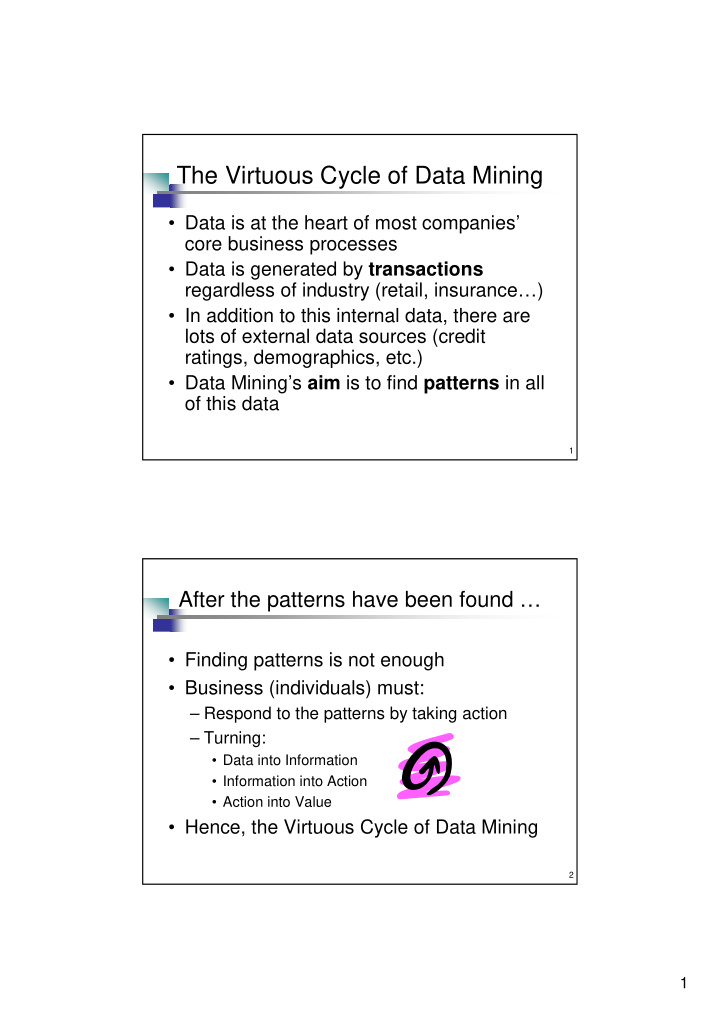



The Virtuous Cycle of Data Mining • Data is at the heart of most companies’ core business processes • Data is generated by transactions regardless of industry (retail, insurance…) • In addition to this internal data, there are lots of external data sources (credit ratings, demographics, etc.) • Data Mining’s aim is to find patterns in all of this data 1 After the patterns have been found … • Finding patterns is not enough • Business (individuals) must: – Respond to the patterns by taking action – Turning: • Data into Information • Information into Action • Action into Value • Hence, the Virtuous Cycle of Data Mining 2 1
Is Data Mining Easy? • Marketing literature makes it look easy – Just apply automated algorithms created by great minds, such as: • Neural networks • Decision trees • Genetic algorithms – “Poof”…magic happens!!! • Not So…Data Mining is an iterative, learning process • Data Mining takes conscientious, long-term hard work and commitment • Data Mining’s Reward: Success transforms a company from being reactive to being pro-active 3 Data Mining’s Virtuous Cycle 1. Identifying the business opportunity 2. Mining data to transform it into actionable information 3. Acting on the information 4. Measuring the results 4 2
1. Identifying the Business Opportunity • Many business processes are good candidates: – New product introduction – Direct marketing campaign – Understanding customer attrition/churn – Evaluating the results of a test market • Measurements from past Data Mining efforts: – What types of customers responded to our last campaign? – Where do the best customers live? – Are long waits in check-out lines a cause of customer attrition? – What products should be promoted alongside our XYZ product? • Note: When talking with business users about data mining opportunities, make sure you focus on the business problems/opportunities and not on technology and algorithms. 5 2. Mining data to transform it into actionable information • Success is making business sense of the data • There are various data issues: – Bad data formats (alpha vs numeric, missing, null, bogus data) – Confusing data fields (synonyms and differences) – Lack of functionality (“I wish I could…”) – Legal ramifications (privacy, etc.) – Organisational factors (unwilling to change “our ways”) – Lack of timeliness 6 3
3. Acting on the Information • This is the purpose of Data Mining – with the hope of adding value • What type of action? – Interactions with customers, prospects, suppliers – Modifying service procedures – Adjusting inventory levels – Consolidating – Expanding – Etc… 7 4. Measuring the Results • Assess the impact of the action taken • Often overlooked, ignored, skipped • Planning for the measurement should begin when analysing the business opportunity, not after it is all over • Assessment questions (examples): – Did this campaign do what we hoped? – Did some offers work better than others? – Did these customers purchase additional products? – Lots of others… 8 4
Recommend
More recommend